Musculoskeletal Disorders
Total Joint Replacement Physiotherapy
HelloPhysio boosts the body's natural healing responses by complementing manual physical therapy with electronmagnetic, radiofrequency, shockwave, and red light adjunct technologies to improve life-long outcomes.
PAGE CONTENTS
Introduction to Joint Replacement
Common Joint Replacements Conditions & Physiotherapy Treatment
Musculoskeletal Joint Conditions
Physiotherapy as a Conservative First Option Before Surgical Intervention
Improve Joint Replacement Outcomes with Prehabilitation
Joint Replacement Physiotherapy for Rehabilitation after Joint Surgery

Joint replacements are one of the most common surgical interventions for people who suffer from osteoarthritis. Total knee and hip replacement surgeries account for more than half of all procedures. Shoulder redevelopments or elbow recapitulations are also common conditions requiring surgery.
The total increase in joint replacements can be attributed to various factors. One factor is that we live longer on average, meaning our joints are used for longer lifespans and are used more intensely. Our joints are prone to wear and tear. The “baby boomer” generation represents a significant portion of the population that needs joint replacement surgery.
Developments in medical technology have led to the creation of modern, state-of-the-art compression joints that are more mobile than ever before. Orthopedic surgeons have also honed their surgical skills, making these procedures an accessible treatment option for those suffering from disabling arthritic pain or impairment.
Prehabilitation is a rising clinical strategy to enhance post-operative recovery by better preparing patients for surgery. After a joint replacement surgery, progressive technologies can reduce complications from the onset – e.g., breaking up excessive scar tissue that develops after a surgical procedure often contributing to future disabilities.
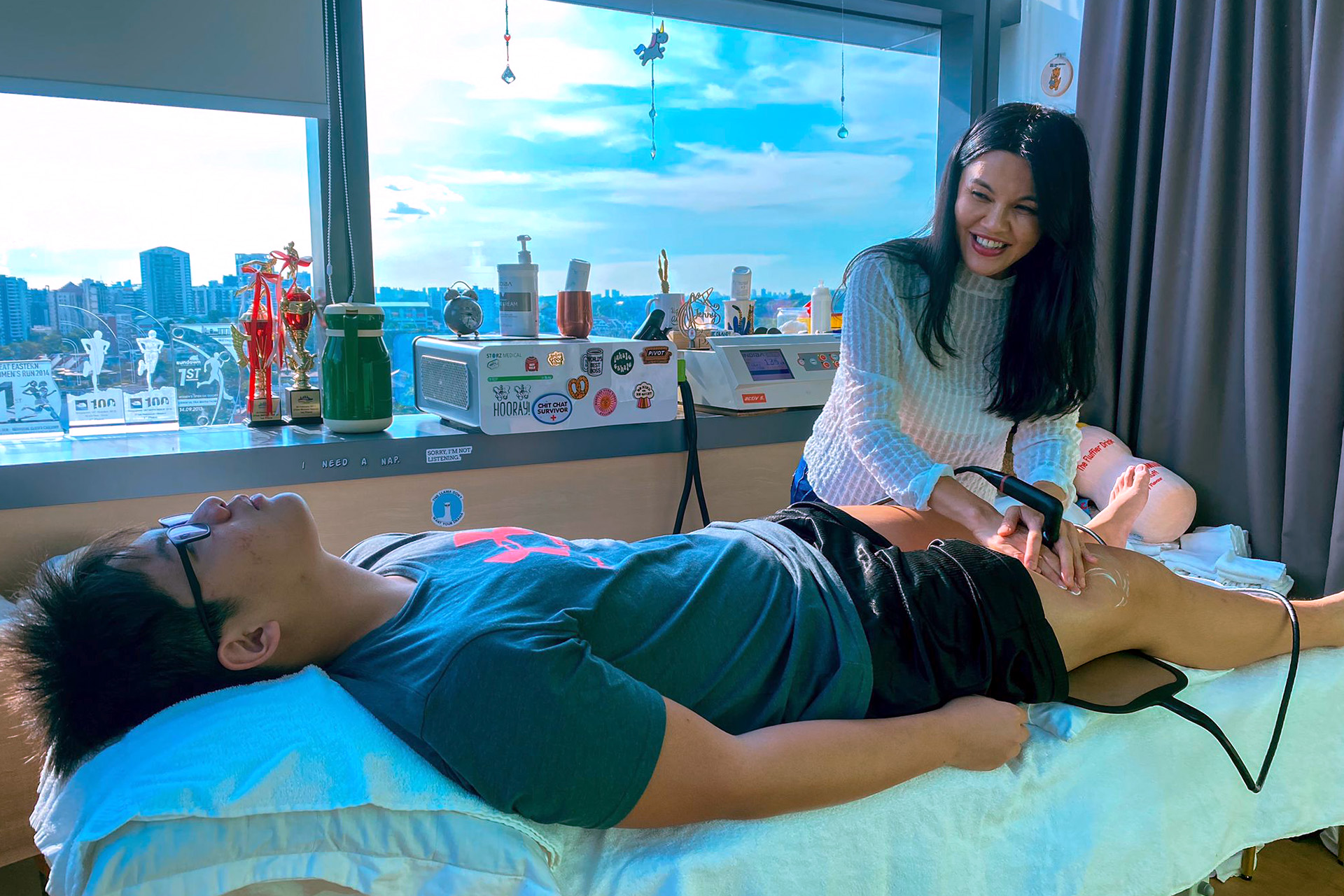
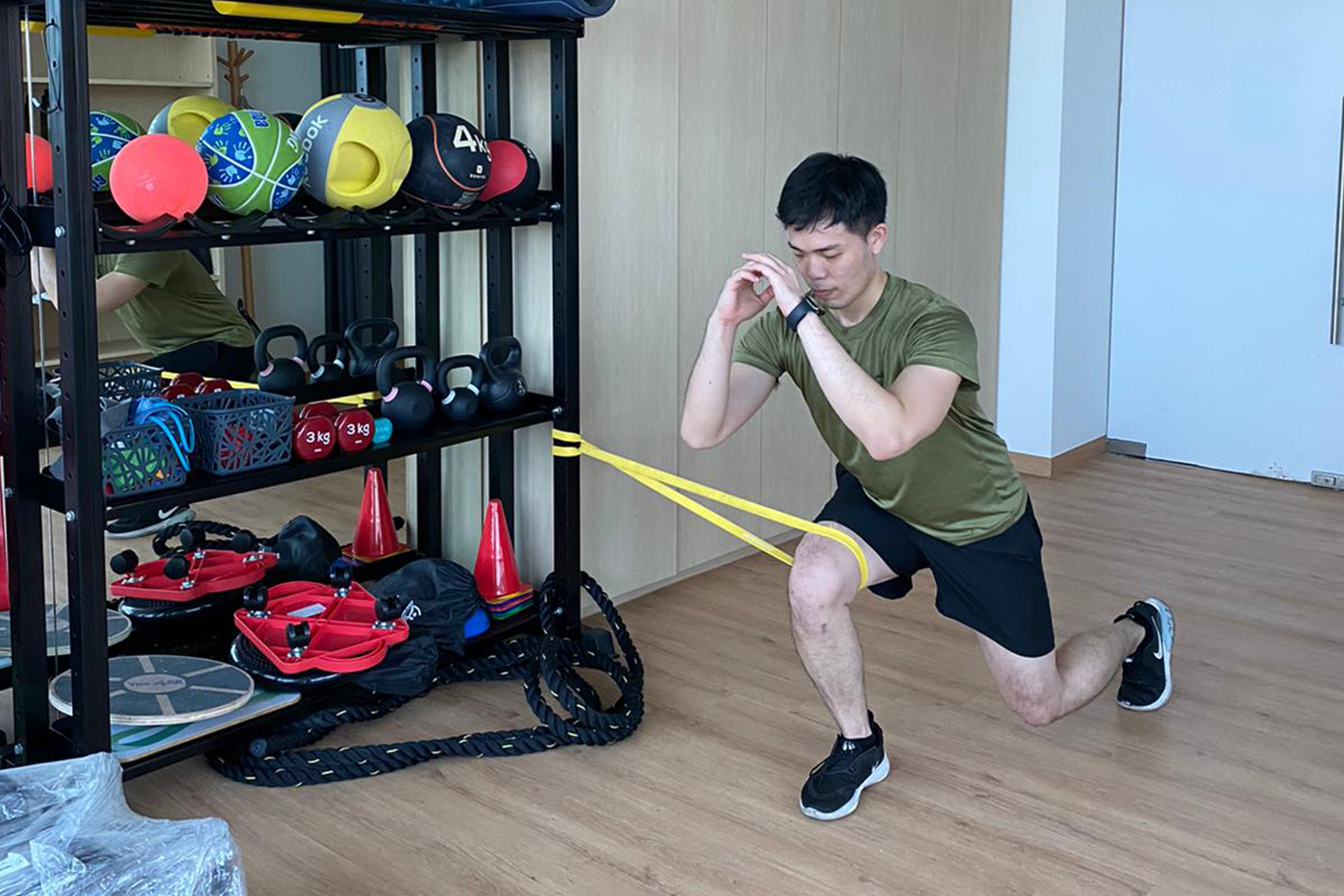
Common Joint Replacements Conditions & Physiotherapy Treatment
Joint replacement surgery may be the only option for people with arthritis who have severe joint pain. For some, joint pain can make simple tasks like standing or sitting down painful. These replacement procedures aim to make everyday tasks easier and improve one’s quality of life.
HelloPhysio’s physiotherapists provide patients with rehabilitative therapies to complement orthopedic surgeons’ post-operative protocols.
From MAGNETOLITH, INDIBA, Shockwave Therapy, LightStim MultiWave, and LightSpeed Lift, our advanced physiotherapy treatments are designed to break the pain cycle and calcified scar tissue concurrently. Our physio and rehab team sets you up for optimal recovery to improve your range of motion, strength, endurance, and balance. When combined, HelloPhysio’s leading practitioners and the latest technologies drastically improve surgical outcomes for both orthopedic surgeons and patients.
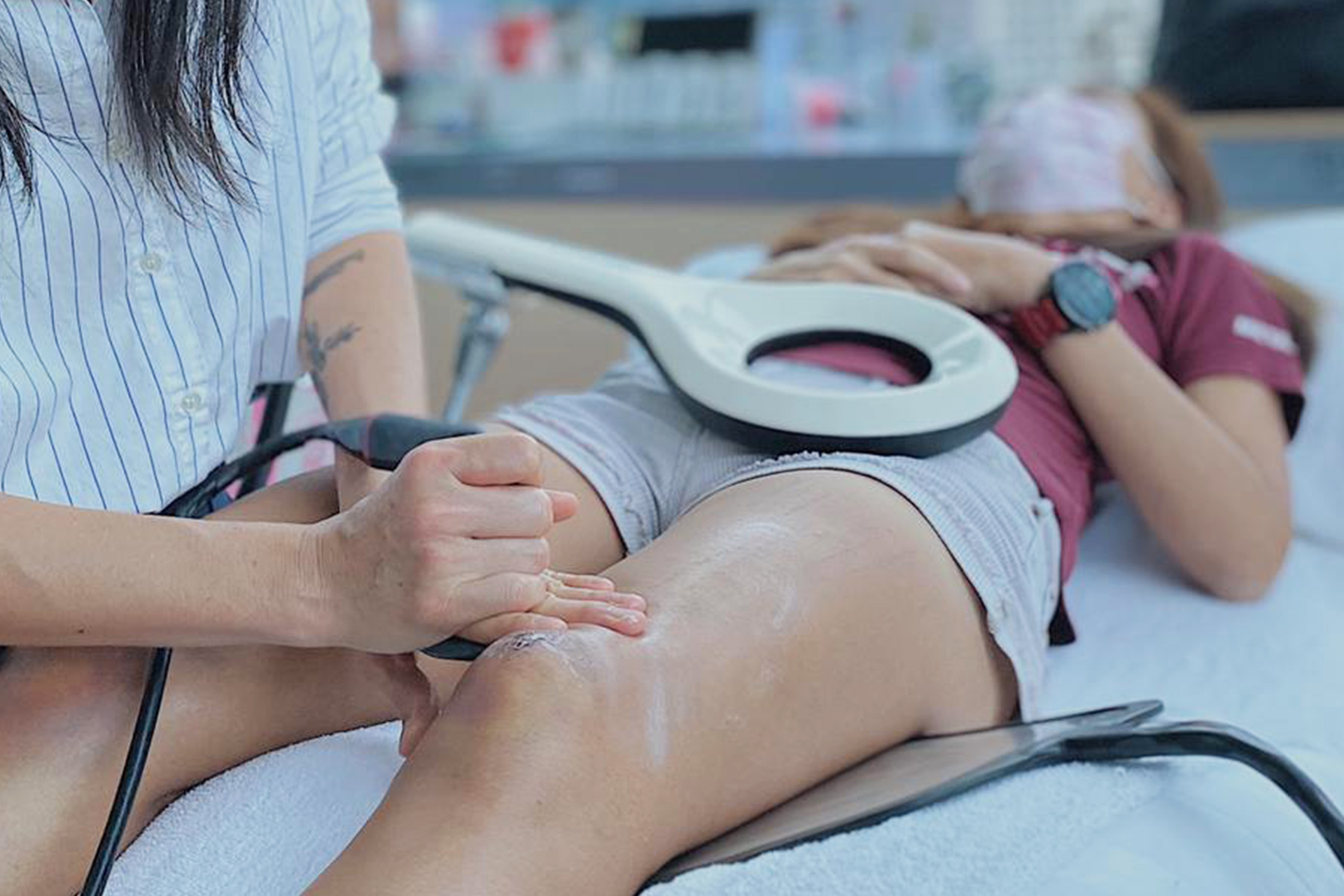
Musculoskeletal Joint Replacement Conditions
- Total Hip Replacement A common joint replacement surgery is total hip replacement. The hip joint is susceptible to arthritic pains, fractures, or other types of damage. The joint is then replaced with a prosthetic to relieve the knee pain and restore some mobility to the hip.
- Total Knee Replacement The knee, like any other joint, is subject to wear and tear. A total knee arthroplasty can help patients restore functionality to their legs. The damaged cartilage and bone will be replaced with a custom-made prosthetic to best suit the person’s leg.
- Unicompartmental Knee Replacement Unlike a total knee replacement, unicompartmental knee replacement only involves a portion of the knee joint. These areas could be on either side of the knee (the medial or lateral components) or at the front, where the knee and thigh meet (the patellofemoral compartment). It is a less invasive surgery than total knee replacement, as only a portion of the knee is operated on.
- Shoulder Joint Replacement Shoulder operations are much rarer than knee or hip replacements, as the shoulder does not bear weight, making it less susceptible to wear and tear. Like any joint, arthritis, fractures, or other types of damage can necessitate replacement to alleviate pain and restore mobility.
- Reverse Total Shoulder Replacement In a reverse total shoulder replacement, the ball and socket joint are placed in the opposite order at the shoulder joint. It is a surgery usually done for patients with damage to arm muscles like the rotator cuff. This new arrangement allows the arm to move without further damaging or tearing those muscles.
- Total Elbow Replacement In cases where the elbow becomes damaged or suffers from arthritis, total elbow replacement may be necessary. Artificial components replace parts of the ulna (the tip of your elbow) and the humerus to restore functionality.
- Wrist Joint Replacement (Wrist Arthroplasty) Like other elective surgeries, wrist joint replacement involves adding an artificial component to the joints to restore mobility and reduce pain. There are different types of implants for the wrist joint, as it is a very dense network of complex joints, necessitating other treatments for various injuries.
- Ankle Replacement Surgery If the smooth cartilage of the ankle gets worn down, it creates friction, damaging the bones surrounding it with each step. In cases like this, ankle replacement surgery may be necessary.
Most patients experience pain relief following total joint replacement, but functional performance and strength losses are significant in the year following surgery. The joint replacement does not enable patients to do things they could not do before, but it improves their overall quality of life.
Physiotherapy as a Conservative First Option Before Surgical Intervention
When deciding whether or not to have joint replacement surgery, it is critical that you are adequately educated about the surgery’s risks and benefits, pre-op prehabilitation, and post-op rehabilitation.
Joints are living tissue, like any other organ in your body, and begin to slowly deteriorate over time through normal wear and tear from daily activities. It’s crucial to remember that the degree of joint deterioration isn’t always directly related to how much pain you might feel. For example, some people may experience only minor or no discomfort in daily activities, yet MRIs may show significant wear and joint degradation.
Your orthopedic surgeon will be best equipped to answer questions about surgical interventions. However, our team at HelloPhysio can provide you with potential alternatives, depending on your injury’s severity.
Patients and practitioners often seek a “quick fix” without adequately assessing the various treatment alternatives before invasive medical surgeries that may have devastating life-long effects. Given how common these treatments have become, it’s easy to forget that a joint replacement is a major surgical procedure with inherent hazards. There is a movement in modern medicine that looks at more conservative options first, including physiotherapy and technologies to stimulate the body’s natural healing responses.
Most patients react well to physiotherapy, and replacements can sometimes be avoided – or at the very least, substantially postponed until necessary. If invasive surgery is absolutely necessary, our experienced physiotherapy and rehab team will educate you on post-operative expectations and pre-surgical requirements to ensure the best possible outcome.
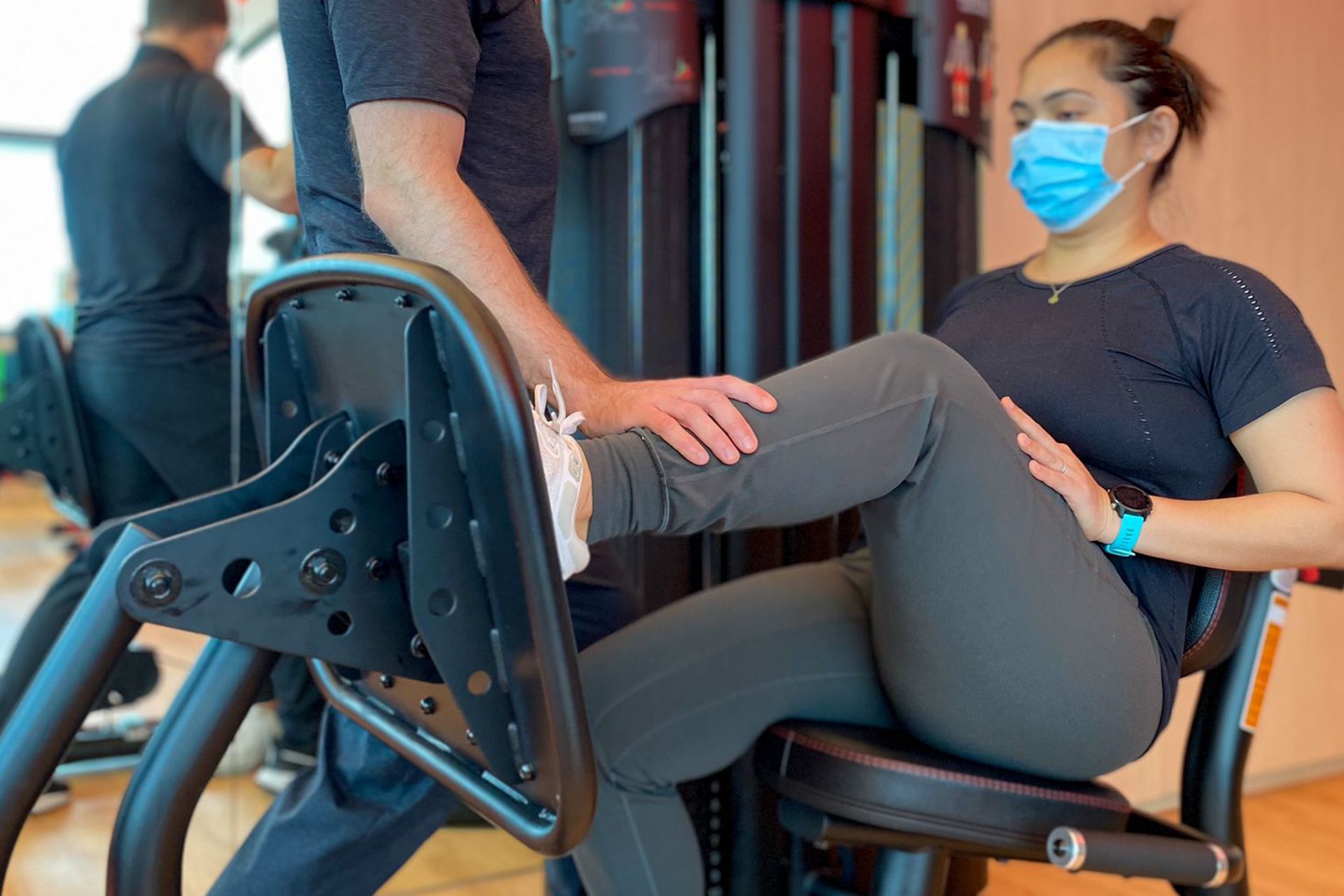
Improve Joint Replacement Outcomes with Prehabilitation
HelloPhysio’s prehabilitation complements our post-surgery rehabilitation treatments to help patients prepare for and recover from joint replacement surgery. We specialize in therapies that address strains, post-surgical requirements, arthritis, and osteoporosis, among other soft tissue injuries.
Prehabilitation is increasingly being explored to improve postoperative outcomes by maximizing patients’ functional conditions before surgery. By undergoing prehabilitation, you can prepare yourself for surgery better and boost your post-surgical results.
Research shows that the better you feel before surgery, the better your post-surgical results will be. Prehab physiotherapy will give you small gains in strength and flexibility that can improve your body’s ability to overcome invasive surgery.
The entire continuum of care from before the surgery to after the operation is designed to improve your body’s resilience prior to elective joint surgery. Operations wreak havoc on the body, and the toll is substantial, weakening a person physically and mentally.
A preoperative assessment with our physiotherapist creates a therapeutic plan to build muscle strength, mobility, range of motion, and joint function before the elective surgery. This puts your body in the best possible condition before surgery.
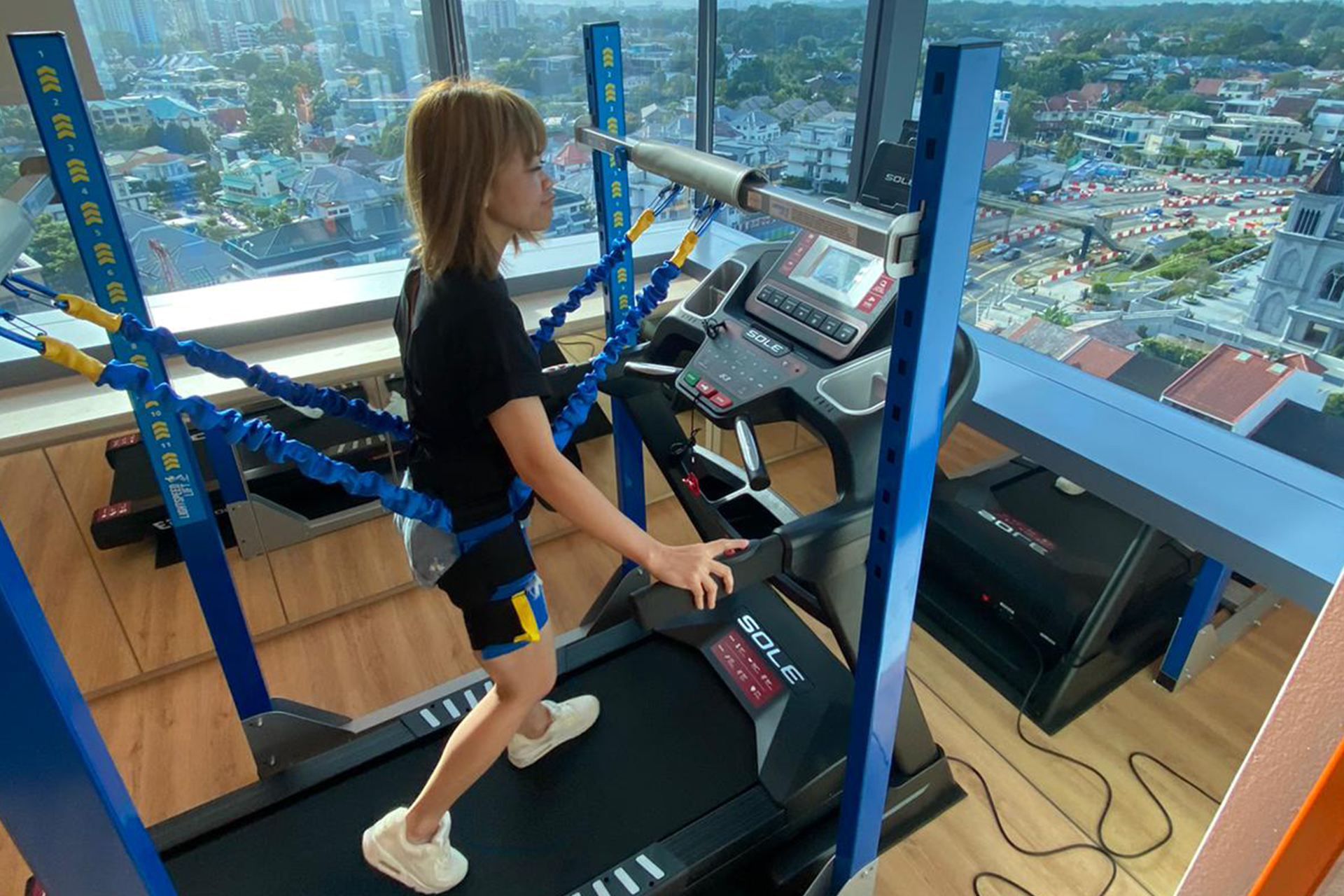
Joint Replacement Physiotherapy for Rehabilitation after Joint Surgery
Our clinic brings the latest technologies to improve joint replacement recovery in Singapore. Patients having total joint replacement are frequently referred to our clinic for our evidence-based physical therapy to improve postoperative outcomes drastically. For surgical post-op physiotherapy, our comprehensive plans focus on early joint replacement rehabilitation: strength, range of motion, and functional restoration treatment phases for bones, joints, ligaments, tendons, and muscle disorders.
The early recovery phase occurs right after discharge from, for example, Achilles tendon, hip dysplasia, or posterior tibial tendon surgeries and continues until the condition has healed and swelling diminished. During this time, we focus on reducing pain and using simple exercises to regain muscle function without hindering the healing process.
We combine our manual therapy with innovative technologies from EMTT, INDIBA, Shockwave Therapy, LightSpeed Lift, and LightStim Red Light Therapy. These techniques reduce pain, break down scar tissue, activate cellular tissue healing, and improve vascularization, among other benefits. For example:
- With EMTT Therapy following surgery, the high-oscillation frequencies help to activate the metabolism and revitalize the surrounding treatment area to stimulate self-healing further.
- Focal Shockwave Therapy works noninvasively to break down fibrous scar tissue adhesion, which leads to immobility in the surrounding tissues for shoulder pathologies.
- INIDBA is effective before and after elective knee replacement surgery, as it promotes lymphatic and arterial blood circulation. Oxygen flow proliferates throughout the body, which helps to relieve pain, thereby increasing mobility, decreasing recovery time, and reducing edema.
- For high-performing athletes who want to recover faster with less stress following ankle surgery, LightSpeed Lift reduces body weight lowering the impact of movement, allowing you to load and retrain your body to walk, jog and run earlier in the recovery process.
- LightStim Red Light Therapy increases blood circulation to damaged tissues (known as the process of photobiomodulation) following wrist joint replacement.
Clinical Pilates will build strength and aid in restoring the range of motion in the afflicted region. Simple strengthening exercises will also help the healing process. Using LightSpeed Lift technology, we will get you back on your feet sooner. This new treadmill technology offloads patients’ weight to build strength and restore their range of motion by safely walking and moving with less pressure.
Functional restoration follows after the client’s strength has returned. Exercises become more challenging to help patients meet the daily physical demands of their lifestyles, restoring mobility, function, and strength.
Although each patient’s case is unique to their injury, lifestyle, and orthopedic surgeon’s treatment plan, HelloPhysio works to restore strength functionally to help every patient meet the daily physical demands of their everyday lifestyle.
Physiotherapy Rehabilitation at HelloPhysio
When a person undergoes hip or knee, shoulder, or elbow replacement surgery, it is essential to find the right orthopedic surgeon and physiotherapist who understand how to hasten recovery safely, improve long-term outcomes, and prevent future issues like osteoporosis.
Rehabilitation programs are complicated interventions that include many specific therapies with multiple healthcare experts, including orthopedic surgeons and physiotherapists. Individuals’ rehabilitation must be personalized based on their particular circumstances and response to surgery and rehabilitation.
HelloPhysio’s physical therapists specialize in mobility, movement patterns, and pain management. Our team can assess, diagnose, and treat various musculoskeletal disorders to improve range of motion, reduce pain, and improve strength. As part of your rehabilitation, physiotherapy will help you avoid any secondary complications associated with surgery.
Joint replacement surgery is not without its risks. Fortunately, HelloPhysio’s multidisciplinary team of rehabilitation experts can help to reduce post-surgery complications.
